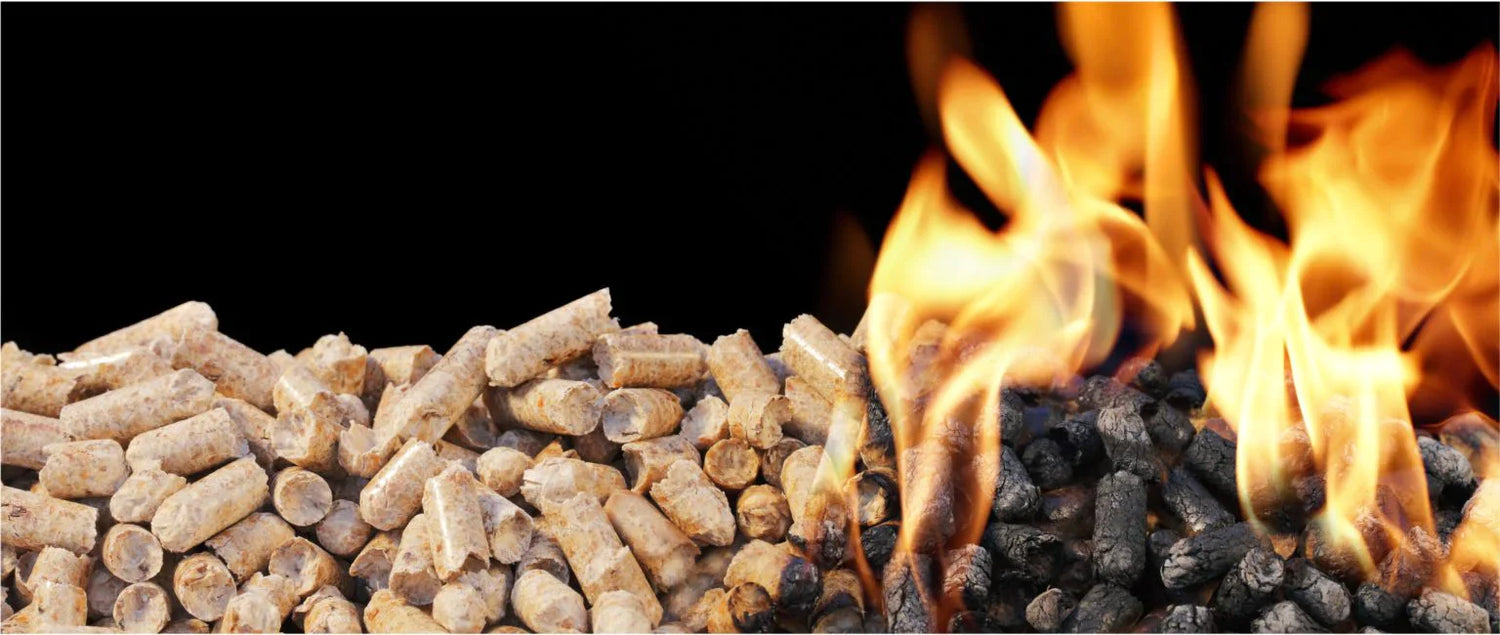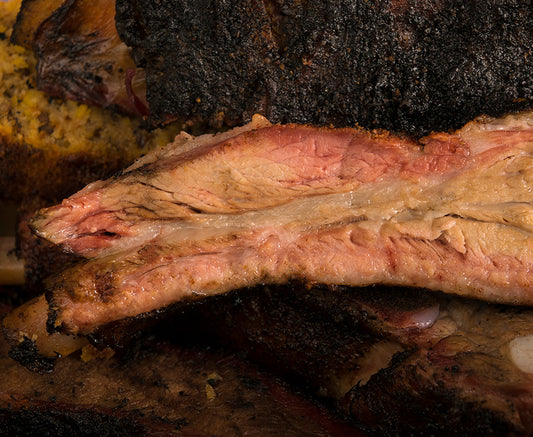As one of the earliest cooking methods, food smoking has stood the test of time. Even though we have redefined how we preserve our foods, we still use smoke to help our briskets and other meats stay fresh for longer. Thanks to the advancements in technology and amazing recipes, now food smoking is also used to add flavor instead of just preserving it.
But not all smokers are the same—there are different types of food smokers available. In this article, we will discuss the differences between a pellet smoker and an electric food smoker, pointing out some important things to consider before buying your food smoker.
PELLET SMOKERS
Also known as a pellet grill, a pellet smoker is a grill fed by pellets instead of propane or charcoal, and because of that, will produce smoke from the burnt wood in the process.

HOW A PELLET SMOKER WORKS
Pellets are sawdust compressed into tiny pieces of wood, originally created for furnaces and heating systems. These pellets are placed in a hopper that feeds them into a firebox by an auger drill as it rotates towards the burn pot. Here, the pellets combust, creating heat and smoke to cook your meat.
ELECTRIC VERTICAL FOOD SMOKERS
An electric smoker gets the primary source of heat for cooking from electricity. The ‘vertical’ in the smoker’s name relates to the position of racks stacked vertically on each other.
There are two main types of vertical electric smokers: One uses wood as the source of heat for cooking and generating smoke, and the other uses electricity to generate heat, and wood to generate only the smoke. Food smoking versus cooking with wood can influence the type of smoker you choose.
HOW AN ELECTRIC SMOKER WORKS
When it comes to electric versus pellet smokers, an electric smoker is better in a few important ways: it is easier to use, much faster, and more convenient. Plug your electric food smoker into an outlet and power it on; the bottom of the smoker will start to heat up at the same time the wood begins smoldering, releasing smoke to impart flavor as the food cooks. Most electric smokers have one element for both heat and smoke, while others have a separate element for each.
PELLET VS. ELECTRIC SMOKER: TEMPERATURE CONTROL & RANGE
First we’ll compare temperature control and range in electric and pellet smokers. With both options, the temperature is easily set on a digital or analog device panel, but the main difference lies in the cost; pellet grills require more wood to go through the system to raise the temperature, while electric smokers simply heat up via the heating element.
Temperature ranges are considerably different in an electric versus a pellet smoker, but each gives you the opportunity to explore new cooking methods. In an electric smoker, the range goes from as low as 30℃/86°F, ideal for cold smoking or low and slow cooking, to a maximum high of 160℃/320°F for recipes that need more heat.
Pellet grills, on the other hand, already start hot at 93℃/200°F degrees and go as high as 260℃/500°F. This temperature is too high for cold smoke (the technique for cheese and sausages), but it’s ideal for searing or fast cooking.

WOOD MANAGEMENT IN PELLET VS. ELECTRIC SMOKERS
There are slight differences between electric and pellet smokers regarding wood management. For pellet grills, as most models work automatically, the management comes in storing your wood or removing it from the smoker. Keep your pellets dry and isolated; if they absorb moisture, the smoker’s performance will be affected.
Vertical electric smokers are available configured with a variety of wood-feeding systems, and our recommendation is to purchase one that feeds wood automatically to avoid ‘babysitting’ it. But you can also find electric smokers that need to be opened to empty and refill the wood tray occasionally (this can be a tedious task while cooking a brisket for 8 – 12 hours).
CAPACITY IN ELECTRIC AND PELLET SMOKERS
Electric food smokers come in different sizes, but most models allow you to smoke between 30 and 100 pounds of meat at once depending on the exact capacity. While they offer a small-crowd capacity, electric smokers require a bit of planning only if you want to cook smaller items for hundreds of people or when you want to smoke a large item, such as a whole hog, as this requires rack space.
Pellet smokers have a similar or larger capacity than electric smokers, as some models come with extra space to accommodate much more meat. A pellet smoker typically has a capacity between 250 and 500 pounds of meat, ideal for pitmasters who want to smoke large quantities of meat at one time.
SMOKINESS
When it comes to the smokiness produced in a pellet versus an electric smoker, here is where the flavor of your preparation will be most affected. All pellet grills generate smoke at low-temperature ranges but produce considerably less smoke when the temperature goes up. This happens naturally, as the pellets — or any wood — smoke more at low temperatures; when the pellets or wood catch fire, the smoke goes away, but the heat remains until the pellets burn down to ash.
The way the wood is managed in an electric smoker will also make a big difference; cheaper or non-automatic smokers use the same heat element for the oven and to burn wood, so you have the same problem as you would with a pellet grill. A system separating heat management and wood burning is far more effective for smoke generation. Unlike a pellet smoker, a high-quality electric smoker generates plenty of pure smoke, regardless of the temperature you want for the oven.

COMPARE PELLET SMOKERS AND ELECTRIC SMOKERS BEFORE YOU BUY
WANT TO LEARN MORE ABOUT FOOD SMOKING?
Consult our Ultimate Smoking Guide to learn all you need to know about the types of wood for smoking food, how to pair every type with your recipes, and more. Whether you decide to buy an electric or a pellet smoker, do your research first to know exactly what to expect from it. For more great ideas, smoker tips and tricks, recipes, and techniques, including how to inject meat for flavor and tenderness, explore our Food Smoking Blog.





